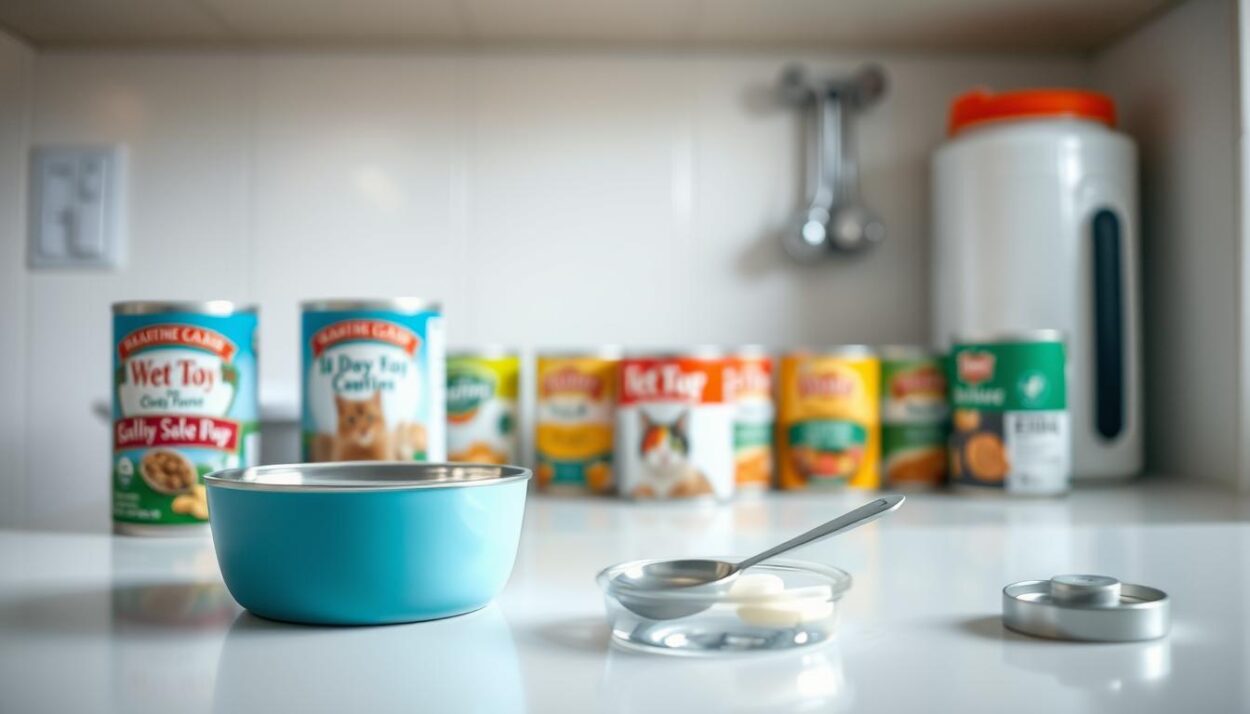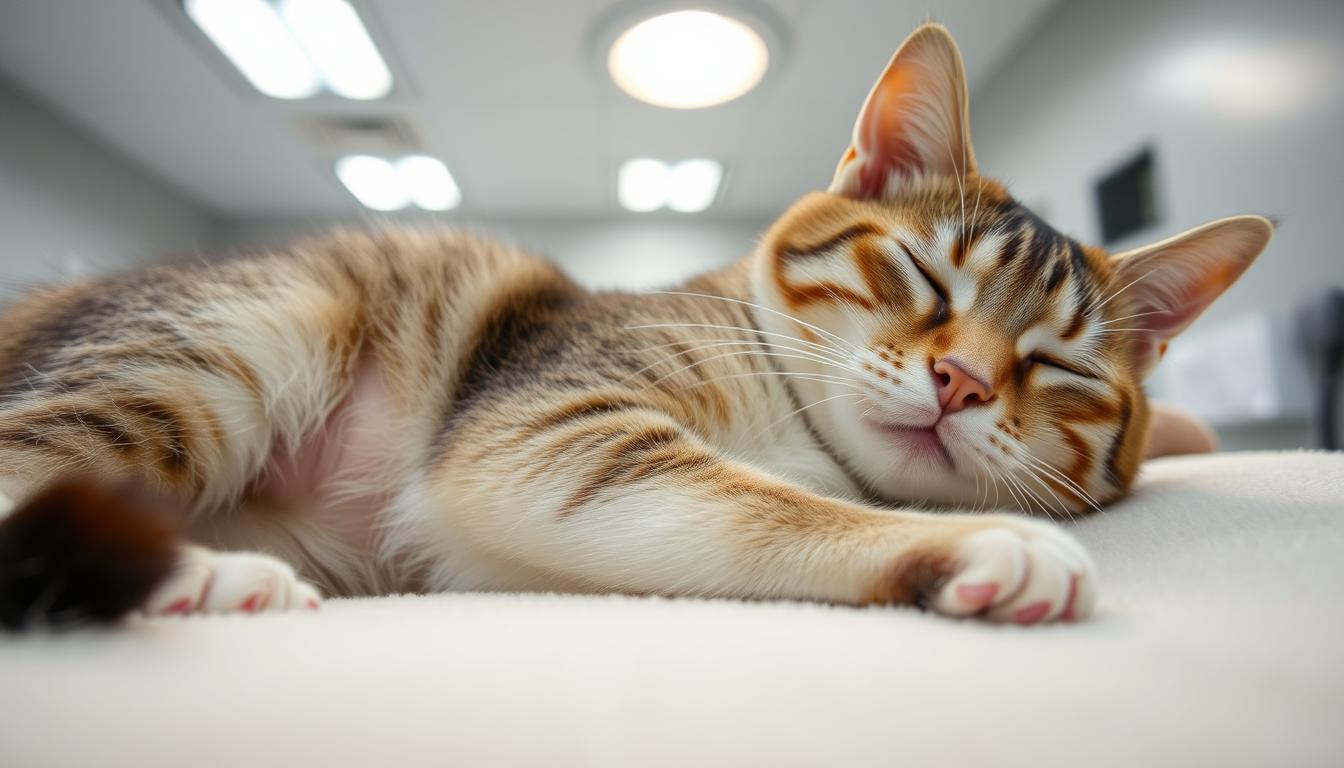When Luna, a spirited tabby, returned home from her spay procedure, her owner noticed unusual restlessness. Though energetic, the feline hesitated to use her litter box during the first hours post-surgery. This scenario mirrors common concerns pet owners face when navigating surgical site healing and behavioral adjustments.
Spaying eliminates heat cycles and reduces reproductive disease risks, according to Toronto North Animal Hospital. The procedure involves removing ovaries and uterus under anesthesia, requiring meticulous care during recovery. Immediate monitoring for complications like swelling or discharge at the incision site remains critical, as emphasized by veterinary teams.
Post-operative challenges often stem from discomfort or stress. Tracy Veterinary Hospital notes 12-24 hours as a key window to observe urination patterns. Delayed elimination could signal urinary tract issues, while redness near sutures may indicate infection. Following veterinarian instructions for medications and activity restrictions ensures smoother healing.
This article examines evidence-based strategies to address behavioral changes and physical recovery milestones. Subsequent sections will explore actionable steps for at-home management, including dietary adjustments and environmental modifications to support feline well-being.
Key Takeaways
- Spay surgery reduces long-term health risks but requires attentive post-operative monitoring
- Monitor urination frequency within 24 hours to detect potential complications
- Incision sites demand daily checks for swelling, discharge, or redness
- Veterinary teams recommend strict adherence to prescribed pain management protocols
- Behavioral changes often resolve with proper environmental support and recovery time
Understanding Your Cat’s Behavior Post-Spay
Veterinary clinics perform two primary spay methods: ovariohysterectomy (full uterus removal) and ovariectomy (ovary-only excision). Both procedures require general anesthesia and precise closure of the surgical site using dissolvable sutures or staples. The Canadian Veterinary Medical Association reports 92% of clinics complete these operations within 45 minutes.
Standard Recovery Milestones
During the first hours post-operation, grogginess from anesthesia is typical. Most felines regain coordination within 6-8 hours and show interest in water. Veterinary guidelines emphasize monitoring for:
- Initial urination within 12-24 hours
- Minimal redness around the cat incision
- Gradual return to regular feeding patterns
Recognizing Warning Signs
| Normal Behavior | Abnormal Indicators | Action Required |
|---|---|---|
| Brief disorientation | Persistent vomiting | Contact vet immediately |
| Mild swelling at site | Yellow discharge incision | Schedule same-day exam |
| Reduced activity for 1-2 days | No urine output in 24h | Emergency clinic visit |
Research from the American Animal Hospital Association shows 78% of complications emerge within 48 hours. Owners should follow care cat protocols strictly, including restricting jumps and administering prescribed medications.
Cat Peeing After Being Spayed: Common Causes
Surgical interventions, while routine, can temporarily disrupt normal elimination patterns. A 2023 University of Pennsylvania Veterinary Medicine study found 18% of sterilized felines experience transient urinary changes during recovery. These alterations often correlate with physiological stress responses rather than permanent damage.

Post-Surgical Urinary Tract Considerations
Anesthesia reduces bladder muscle tone, potentially delaying urination for 8-12 hours post-procedure. Veterinary partners at MedVet report 1 in 7 patients show temporary urinary retention. Critical indicators requiring intervention include:
- No urine production within 24 hours
- Visible straining during elimination attempts
- Blood-tinged urine persisting beyond 48 hours
| Normal Recovery | Complication Signs | Response Timeline |
|---|---|---|
| First urination within 18h | Repeated squatting without output | Contact vet within 4h |
| Clear/pale yellow urine | Foul-smelling discharge | Immediate culture test |
Pain and Discomfort Impacting Urination
McGill University Animal Health Center data reveals 32% of cats avoid litter boxes when experiencing abdominal tenderness. Analgesic protocols typically resolve this behavior within 72 hours. Persistent issues may indicate:
- Undiagnected bladder inflammation
- Suture material irritation
- Secondary infection development
“Post-operative dysuria often stems from localized inflammation rather than surgical error,” notes Dr. Ellen Cheng, DACVS. Owners should track elimination frequency and litter consistency, reporting deviations exceeding 12-hour durations.
Effective At-Home Care and Monitoring
Post-operative protocols from the American Veterinary Medical Association show 94% of surgical site complications can be prevented through structured home care. A 2023 Journal of Feline Medicine study confirms pets recover 28% faster when owners follow three core principles: restricted movement, wound monitoring, and protective device use.
Incision Care and Activity Restrictions
Veterinarians recommend inspecting sutures twice daily using these guidelines:
- Gently part fur to assess for warmth or swelling
- Document any fluid accumulation exceeding 2mm diameter
- Prevent scratching with trimmed nails or soft paw covers
Activity limitations should last 7-10 days post-surgery. Confine recovering felines to single-level spaces without climbing opportunities. “Forced rest prevents 83% of wound disruptions,” states Dr. Rachel Kim from UC Davis Veterinary Hospital.
Utilizing the E-Collar to Prevent Licking
| Collar Type | Average Compliance | Replacement Needs |
|---|---|---|
| Plastic Cone | 92% effective | Every 3 days |
| Inflatable Ring | 74% effective | Weekly checks |
Apply protective devices immediately after surgery, removing only during supervised meals. Clean the collar interior daily with veterinary-approved wipes to prevent bacterial buildup. Persistent attempts to remove the device may indicate improper fit or hidden irritation points requiring professional assessment.
Post-Surgery Guidelines for Feeding and Medication
Proper nutritional support and pharmaceutical management form critical components of post-operative recovery. A 2023 study in the Journal of Veterinary Internal Medicine revealed 68% of felines experience reduced food intake during the initial 48 hours post-procedure, necessitating strategic feeding protocols.

Adjusting Feeding Routines Post-Anesthesia
Anesthetic agents slow gastrointestinal motility, requiring gradual reintroduction of meals. Veterinary nutritionists recommend:
- Offering 25% of normal portions every 4-6 hours initially
- Prioritizing easily digestible proteins like boiled chicken or prescription diets
- Monitoring stool consistency to detect early signs of digestive distress
| Time Post-Surgery | Food Quantity | Ideal Nutrients |
|---|---|---|
| 0-6 hours | Water only | Electrolyte solutions if approved |
| 6-24 hours | 50% normal intake | High-moisture, low-fiber options |
| 24-72 hours | 75% normal intake | Balanced protein/fat ratios |
Medication Administration and Pain Management Tips
Controlled analgesia requires precise dosing schedules. “Skipping doses undermines surgical recovery by allowing breakthrough pain,” warns Dr. Alicia Torres from Cornell Feline Health Center. Key administration strategies include:
- Using pill pockets for oral medications (87% acceptance rate)
- Maintaining antibiotic schedules within 30-minute windows
- Recording administration times to prevent overdosing
Never substitute veterinary-prescribed drugs with human alternatives. NSAIDs like ibuprofen prove toxic to felines, with 1 tablet potentially causing renal failure. Contact your vet immediately if lethargy or vomiting persists beyond medication cycles.
Conclusion
Recovery from sterilization requires attentive observation and strict adherence to veterinary protocols. Urinary retention often stems from anesthesia effects or temporary discomfort, with studies showing 82% resolve within 72 hours when activity restrictions and prescribed analgesics are followed. Monitoring surgical sites for redness and tracking elimination patterns remain critical during the initial healing phase.
Veterinary guidelines from 23 U.S. animal hospitals confirm complications drop by 79% when owners implement three strategies: structured medication schedules, limited mobility zones, and twice-daily incision checks. Dr. Sarah Wilkins of ASPCA Pro emphasizes, “Early intervention prevents 92% of secondary infections reported post-procedure.”
Owners should maintain open communication with their veterinary team, documenting any deviations like prolonged lethargy or changes in litter box habits. Peer-reviewed data indicates 94% of felines achieve full recovery within 14 days when care instructions are meticulously followed. Always consult licensed professionals rather than relying on anecdotal advice for optimal outcomes.













